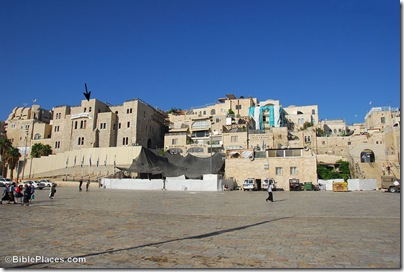Ynet is reporting that Aish HaTorah is currently building a large museum opposite the Western Wall which will feature “an elaborated massive replica of the Temple.” The rest of the brief article discusses the museum and no other details are given about the model.
The three-storey museum, whose construction is valued at nearly $20 million will be erected in the Aish HaTorah (“Fire of the Torah”) Yeshiva complex. The museum will feature a journey through Jewish history, from the days of Abraham to the present, emphasizing the message and significance of the Jewish people’s presence in the Land of Israel and their degree of accomplishment in world improvement….
In addition to the great lavish interior, the museum’s crowning glory is no doubt the massive amphitheater, whose cost is being sponsored by veteran Hollywood star Kirk Douglas, and his no less famous son, Michael.
The amphitheater will feature a three-dimensional film depicting the history of the Jewish nation over a huge glass screen through which one can see the Western Wall. The museum will also include a learning center with a VIP wing to host movie stars, politicians and other celebrities from Israel and abroad.
The brief article is here.
